Grape Ape Marijuana Strain Information and Review
Ladies and gentlemen, gather around for a journey into the deep purple world of the Grape Ape strain. Nestled in the vast panorama of cannabis strains, the Grape Ape stands as a vibrant testament to the craftsmanship of breeders. Adored by both novice and seasoned consumers, its name is synonymous with fruity delight and deep…
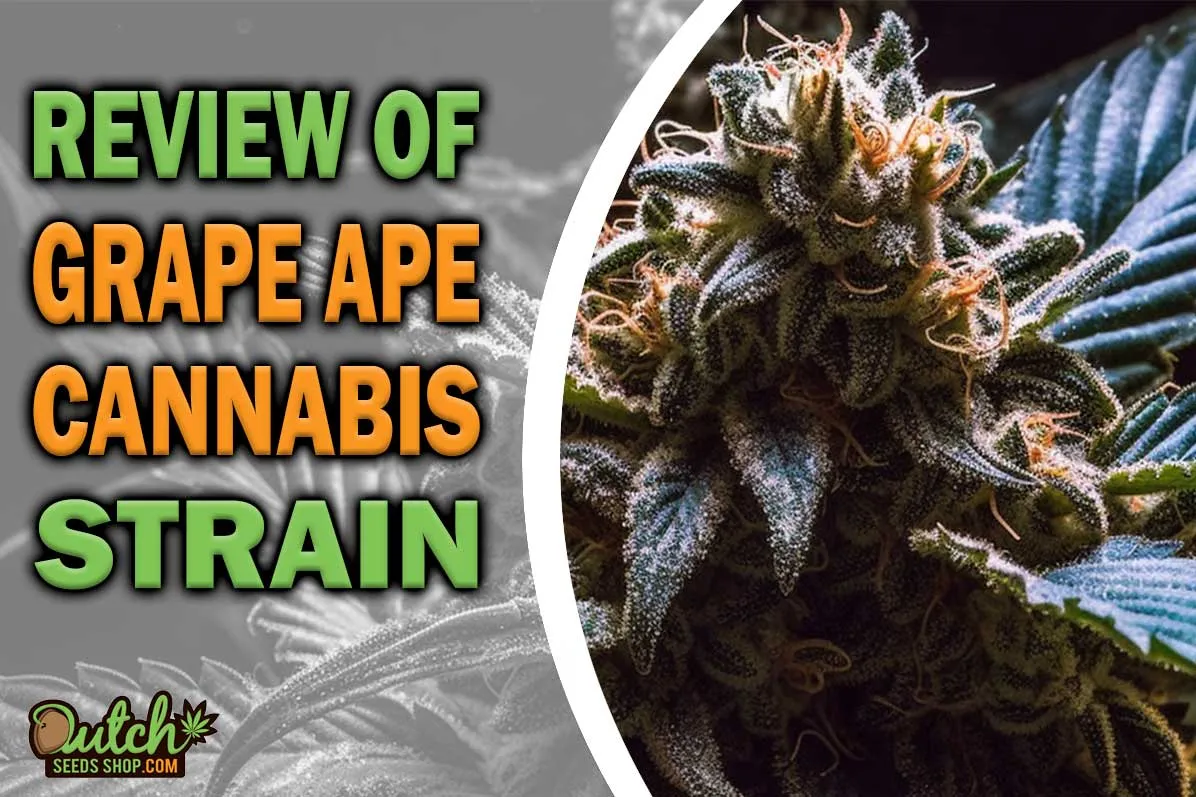
Type: 90% Indica / 10% Sativa
Genetic: Afghani x Mendocino Purps x Skunk #1
THC: 20 – 25%
CBD: 0 – 0.1%
Terpenes: Beta-caryophyllene, Myrcene
Flowering Time: 42 – 56 days
Indoor Yield: 1.3 – 1.6 oz/ft²
Outdoor Yield: 20 – 25 oz/plant
Effects: Analgesic, Happy, Relaxed, Sleepy
Flavors/Taste: Candy, Grape, Skunk
If you’ve ever wondered why the Grape Ape strain has gained such a reputation among cannabis enthusiasts, it’s time to dive deep into its roots, literally and figuratively.
This strain isn’t just about its intoxicating aroma or its tantalizing flavor; it’s a finely tuned blend of genetics, history, and cultivation prowess.
Key Takeaways:
- Grape Ape is a celebrated strain with dominant hues of purple and a striking aroma reminiscent of grape vineyards.
- Born from the union of Afghani, Mendocino Purps, and Skunk #1, its genetic lineage is both robust and renowned.
- The strain’s THC content hovers between 20% to 25%, with a minimal CBD presence of less than 0.1%.
- A musky, skunky, candy, and grape terpene profile defines Grape Ape’s distinct aroma and flavor palette.
- Cultivators can expect a flowering time of 42 to 56 days, with medium yields both indoors and outdoors.
- Grape Ape’s effects lean heavily towards relaxation, making it a favored choice for both recreational and medical users.
- The strain can be grown both indoors and outdoors, with a preference for a mild climate and moderate care.
Grape Ape Strain Genetics
Every strain carries a story within its DNA, and Grape Ape is no exception.
But to understand its narrative, we need to peek into its genealogy.
Like flipping through the pages of a family album, Grape Ape’s genetic lineage offers glimpses of its potent history and its undeniable charisma.
Origins and Lineage
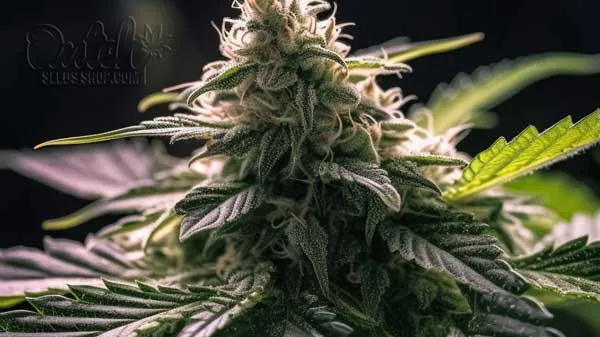
Dive into the cannabis archives, and you’ll uncover that the Grape Ape is a stellar product of blending potent strains.
Born from the powerful union of Afghani, Mendocino Purps, and Skunk #1, it’s akin to royalty in the world of weed strains.
Each of these parent strains brings a unique characteristic to the table:
- Afghani: Known for its deep sedative effects and robust nature.
- Mendocino Purps: A strain celebrated for its tantalizing grape aroma and striking purple hues.
- Skunk #1: Offers a balanced experience, ensuring that Grape Ape doesn’t lean too heavily on either the relaxing or invigorating side.
By understanding its parents, one can better appreciate the unique blend of effects, aromas, and flavors the Grape Ape offers.
History
While Grape Ape seeds exact origins remain a topic of debate, it’s widely accepted that it made its debut in the cannabis scene sometime during the early 2000s.
Since then, it’s been a fan favorite, cherished for its potent effects and its iconic grape-like aroma.
Its journey from being a novelty strain to achieving legendary status is a testament to its inherent quality and the dedication of breeders who have perfected it over the years.
Through dedicated breeding and selection, the Grape Ape has evolved to showcase its best traits, making it an evergreen choice for cannabis consumers.
Appearance of Grape Ape Weed
One look at the Grape Ape, and you’ll be mesmerized.
But what makes it so distinctive? Let’s break it down:
- Colors: The strain lives up to its name with dominant hues of purple.
Interspersed with these shades are bursts of green, giving it a majestic look. - Bud Structure: Compact, dense, and tight – the buds are indicative of its strong indica lineage.
Coated in a shimmering layer of crystals, its trichomes gleam with promise. - Unique Characteristics: What truly stands out are the rich purple trichomes and the fiery orange pistils.
Together, they paint a picture of a strain that’s as aesthetically pleasing as it’s potent.
Is Grape Ape Indica or Sativa?

Step into any dispensary, ask for Grape Ape, and you’ll often hear it described as a predominantly indica strain.
This isn’t mere hearsay; Grape Ape boasts a significant 90% indica dominance.
This means users can expect deeply relaxing effects, perfect for unwinding after a long day.
Yet, it’s not all about relaxation.
The remaining 10% of its genetics hail from sativa lineage, ensuring there’s a subtle kick of energy, creativity, and alertness.
The combination ensures a holistic experience, wrapping users in a cocoon of relaxation while still leaving room for introspective thoughts and creativity.
Cannabinoids and Terpenes
Unlocking the secrets of Grape Ape means diving headfirst into its cannabinoid and terpene profile.
These compounds are the unsung heroes, sculpting the aroma, flavor, and effects that Grape Ape proudly boasts.
As consumers become more educated, there’s a growing appreciation for how these intricate chemical compositions influence a strain’s overall experience.
Terpenes Profile
When you light up Grape Ape, the first thing to strike is its aromatic symphony.
The terpenes, nature’s aromatic compounds found in many plants, are to thank for this.
Grape Ape’s terpene profile is a delightful blend, each adding a note to its melodious aroma and flavor:
- Musk: This terpene infuses Grape Ape with a deep, earthy foundation, reminiscent of a forest after a fresh rain.
- Skunk: Introducing a pungent twist, it’s the skunky undertone that gives this strain its wild edge.
- Candy: This sweet note elevates the aroma, adding a playful lightness.
- Grape: As the name suggests, the grape terpene dominates, providing that juicy, fruity essence which is unmistakably Grape Ape.
THC and CBD levels
Peel back the layers, and you’ll find that Grape Ape’s effects stem from its potent cannabinoid content.
The strain boasts a notable THC concentration ranging between 20% to 25%.
Such potency ensures that whether you’re a novice or a seasoned smoker, Grape Ape will deliver a memorable experience.
On the other end of the spectrum, its CBD content lingers below 0.1%.
This low CBD ensures that the THC remains the star of the show, driving the strain’s powerful effects.
| THC Level | CBD Level |
| 20%-25% | <0.1% |
Aroma and Flavor
The olfactory experience of Grape Ape strain is an adventure in itself.
As you open the jar, you’re greeted with a rich grape aroma, evoking memories of vineyards in the summer.
But there’s depth here too.
Dive deeper, and the candy sweetness rises, offset by the musky and skunky undertones.
As for the palate, Grape Ape does not disappoint.
Each puff is a burst of fruity grape, rounded out by the complex dance of sweet, musk, and skunk.
Grape Ape Strain Effects and Medical Benefits
Grape Ape, with its unique blend of cannabinoids and terpenes, delivers a multifaceted experience.
Both recreational and medical users will find something to cherish in this strain.
Feelings
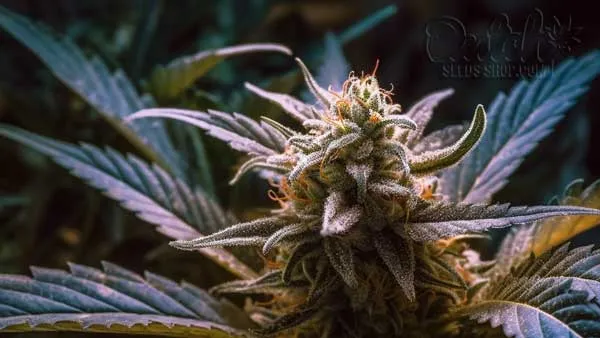
Immerse yourself in a Grape Ape session, and you’ll soon find waves of relaxation washing over you.
This is not just mere relaxation; it’s a deep, enveloping calm that anchors you, making way for emerging feelings of happiness.
The journey doesn’t end there.
As the effects take root, you might find yourself drifting into a peaceful slumber or simply basking in the analgesic properties that provide relief from the day’s aches and pains.
Negatives
Like all cannabis strains, Grape Ape is not without its downsides.
Some users report dry mouth, a common side effect with many strains.
But with its potency, especially for the uninitiated, there’s also the possibility of feeling a tad too relaxed or lethargic.
Keeping water on hand and starting with smaller doses can help mitigate these minor inconveniences.
Grape Ape Strain Helps With
Dive into cannabis forums or speak to long-time users, and tales of Grape Ape’s therapeutic prowess abound.
Beyond the recreational bliss, this strain shines as a beacon for those seeking relief.
Chronic pain, anxiety, and sleep disorders are just some of the conditions that Grape Ape has been known to assist with.
Its potent analgesic properties make it a preferred choice for many medical marijuana patients, offering a natural alternative to synthetic medications.
Growing Grape Ape
Cultivating a strain like Grape Ape is akin to nurturing a prized jewel.
The plant, with its vibrant hues and alluring aroma, demands attention and care.
For those eager to embark on this horticultural adventure, here’s your deep dive into the world of growing Grape Ape strain.
Grape Ape Seeds
Kickstarting your Grape Ape journey begins with sourcing the right seeds.
The market is awash with cannabis seeds, but for a strain of this stature, it’s pivotal to seek out reputable breeders or dispensaries.
Opt for those who have garnered genuine reviews and feedback.
Remember, the quality of your harvest begins with the quality of your seeds.
Ensure they are fresh, viable, and indicative of the strain’s robust genetics.
Growing Guide
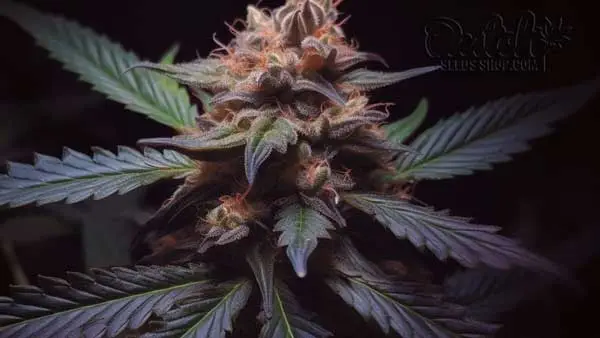
Diving into the cultivation of Grape Ape, whether you’re a novice or a seasoned grower, offers a rewarding experience.
This strain is not too finicky but requires moderate care.
Here are some pointers to set you on the right path:
- Climate: Grape Ape thrives best in a mild climate.
Whether you’re cultivating it indoors or outdoors, ensure temperatures stay consistent. - Height: Naturally, the plant leans towards a medium height, making it manageable for indoor setups.
- Growth: Expect bushy growth with dense foliage.
Regular pruning will ensure light penetrates to the lower branches, promoting even growth.
Indoor and Outdoor Growing Info
Indoor cultivation offers control, allowing growers to maintain an ideal environment.
With yields ranging 1.3 to 1.6 oz/ft², indoor cultivation can be quite rewarding.
Implementing a grow room with proper ventilation and light cycles is paramount.
On the flip side, outdoor cultivation, with its natural conditions, can yield a bounty.
Here, yields hover around 20 to 25 oz per plant.
However, ensure the plants are protected from extreme weather conditions and pests.
Feeding Grape Ape Plants
Like all living beings, Grape Ape plants too have their dietary preferences.
A balanced nutrient regimen ensures they flourish:
- Vegetative Stage: Focus on micronutrients, ensuring the plant gets a rich mix of nitrogen, potassium, and phosphorus.
- Flowering Stage: As the plant begins to flower, switch to macronutrients to support bud growth.
Flowering Time and Yield of Grape Ape Seeds
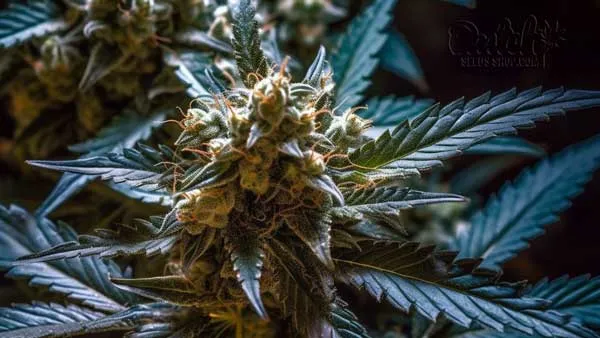
Anticipation builds as the Grape Ape progresses through its life cycle.
Typically, growers can expect the strain to flower within 42 to 56 days.
With meticulous care, feeding, and the right conditions, the yields promise to mirror the strain’s inherent quality and robust genetics.
Comparison of Alternative Strains to Grape Ape Strain
While Grape Ape holds its own, understanding its position among its peers offers a richer perspective.
Here’s how Grape Ape stacks against some popular strains:
| Strain | Dominance | Flavor | Yield |
| Grape Ape | 90% Indica | Grape | Medium |
| Grapefruit | Hybrid | Citrus | Low |
| Zkittlez | Indica Dominant | Tropical | Medium |
| Grape Pie | Hybrid | Fruity Pie | High |
| Sour Diesel | Sativa Dominant | Diesel | High |
| Blueberry Grape Ape | Indica Dominant | Blueberry | Medium |
| Grandaddy Grape Ape | Indica Dominant | Berry | Low |
Grapefruit: A hybrid with a citrus flavor and low potency compared to Grape Ape. It offers a different flavor profile and potentially milder effects.
Zkittlez: An indica-dominant strain with a tropical taste and medium potency. Zkittlez marijuana strain contrasts with Grape Ape in terms of flavor and effect, offering a tropical twist.
Grape Pie: A hybrid strain with a high potency and a fruity pie flavor. In comparison to Grape Ape, it has a stronger potency and a distinct fruity pie aroma.
Sour Diesel: A sativa-dominant strain with a diesel flavor and high potency. It provides an opposite experience to Grape Ape, with uplifting and energizing effects.
Blueberry Grape Ape: An indica-dominant strain with a blueberry flavor and medium potency. It shares the indica dominance and some flavor characteristics with Grape Ape while introducing a blueberry twist.
Grandaddy Grape Ape: Another indica-dominant strain with a berry flavor and low potency. In comparison to Grape Ape, it offers a different berry aroma and potentially milder effects.
FAQ
Is Grape Ape exclusively an indoor strain?
No, Grape Ape can be cultivated both indoors and outdoors, though yields might vary based on conditions.
What’s the THC content in Grape Ape?
Grape Ape boasts a THC content ranging from 20% to 25%.
How does Grape Ape compare to Grapefruit in flavor?
While both have fruity undertones, Grape Ape leans towards a grape flavor, whereas Grapefruit has a distinct citrus punch.
Any specific nutrients for Grape Ape during flowering?
During flowering, emphasize macronutrients to support bud growth and development.
About the Author
